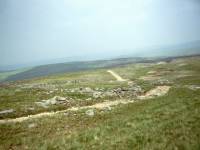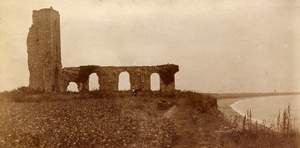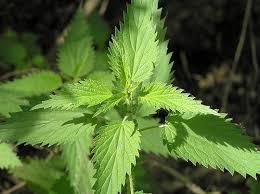
Spring has finally arrived to George Orwell back in 1940 . This entry is from 1st April:
Strong wind, which has dried the soil greatly, but beautiful spring weather in the morning. In the evening overcast, but no rain. Violets out in great numbers everywhere. Larks singing, the first I have heard this year, though most years one hears them much earlier than this. Partridges pairing, rooks & seagulls not yet. A few tulips forming heads. Arabis well out. Note that a few of the carrots I left in the ground were not destroyed by the frost, though most went to mush.
Sowed broad beans, & some in box to fill up gaps. Cleared the ground where peas & parsnips are to go. Dug a little more.
17 eggs.









